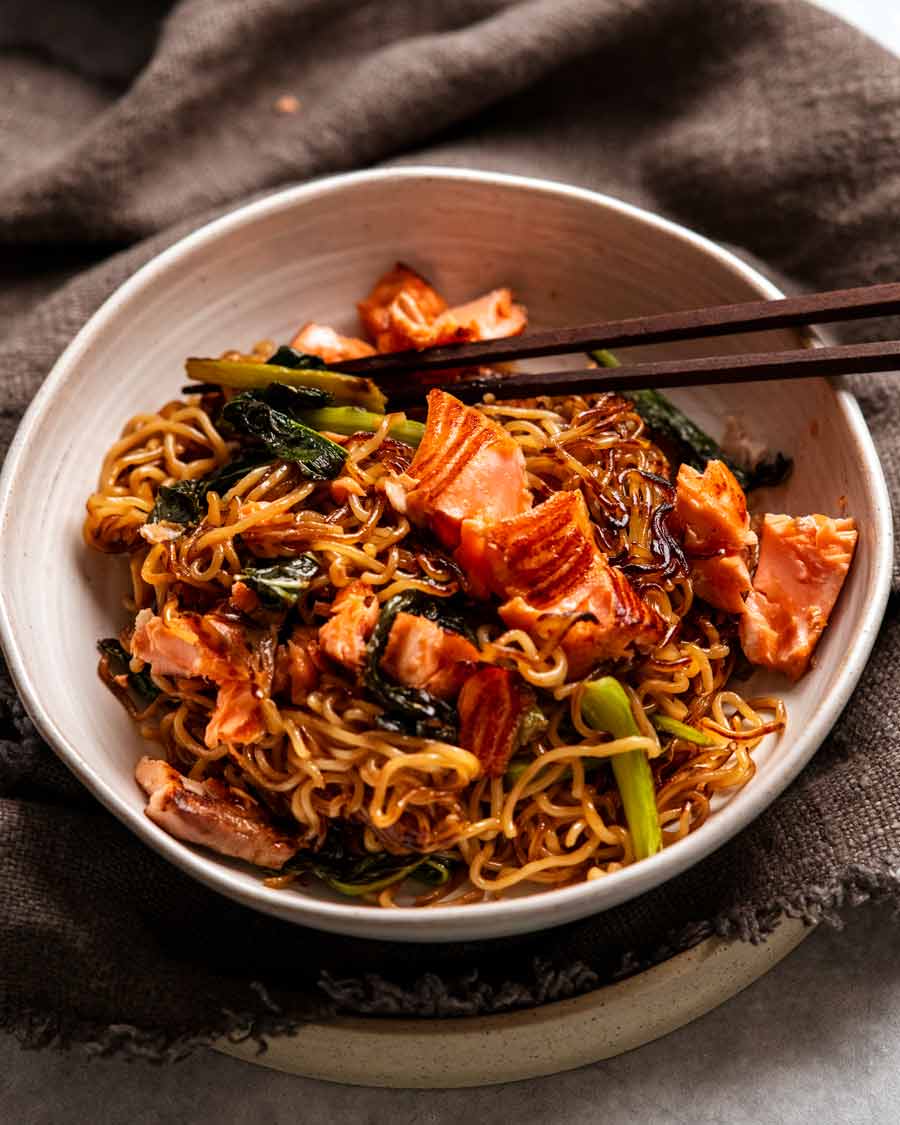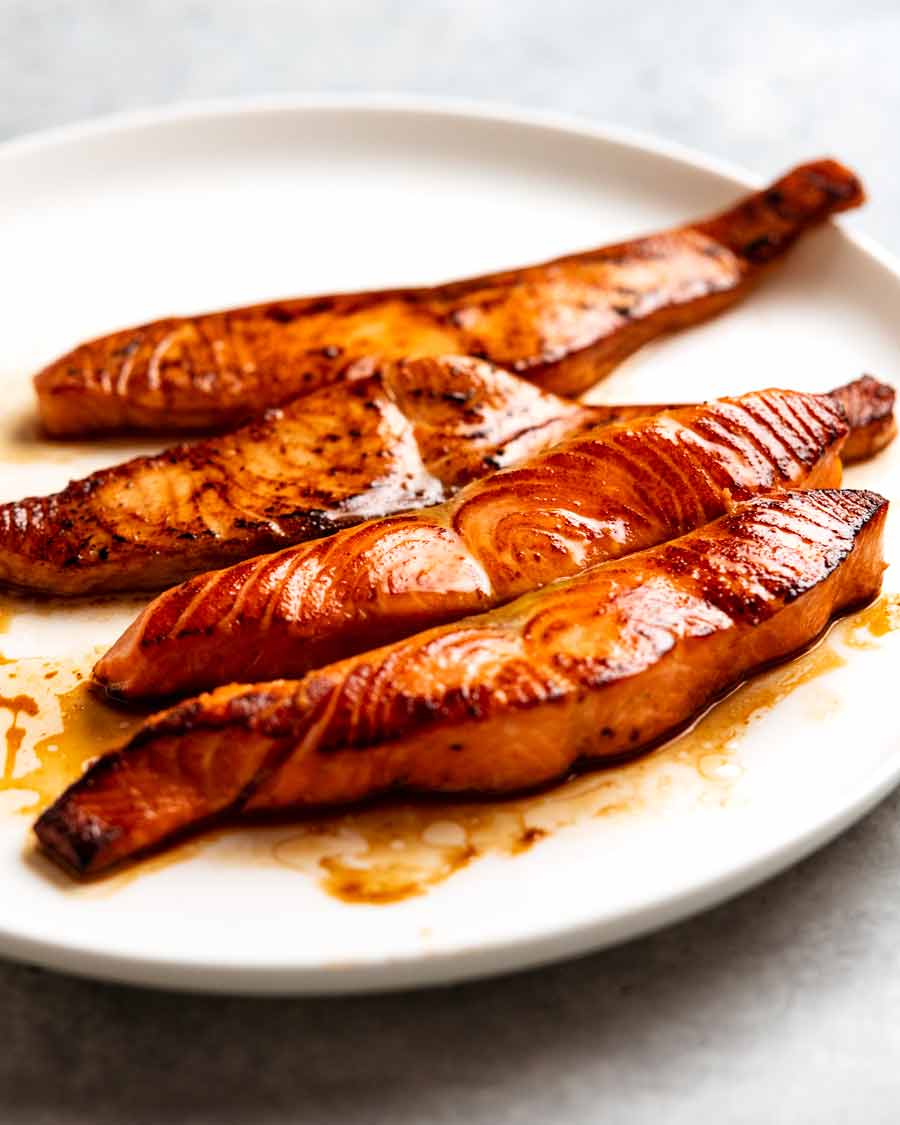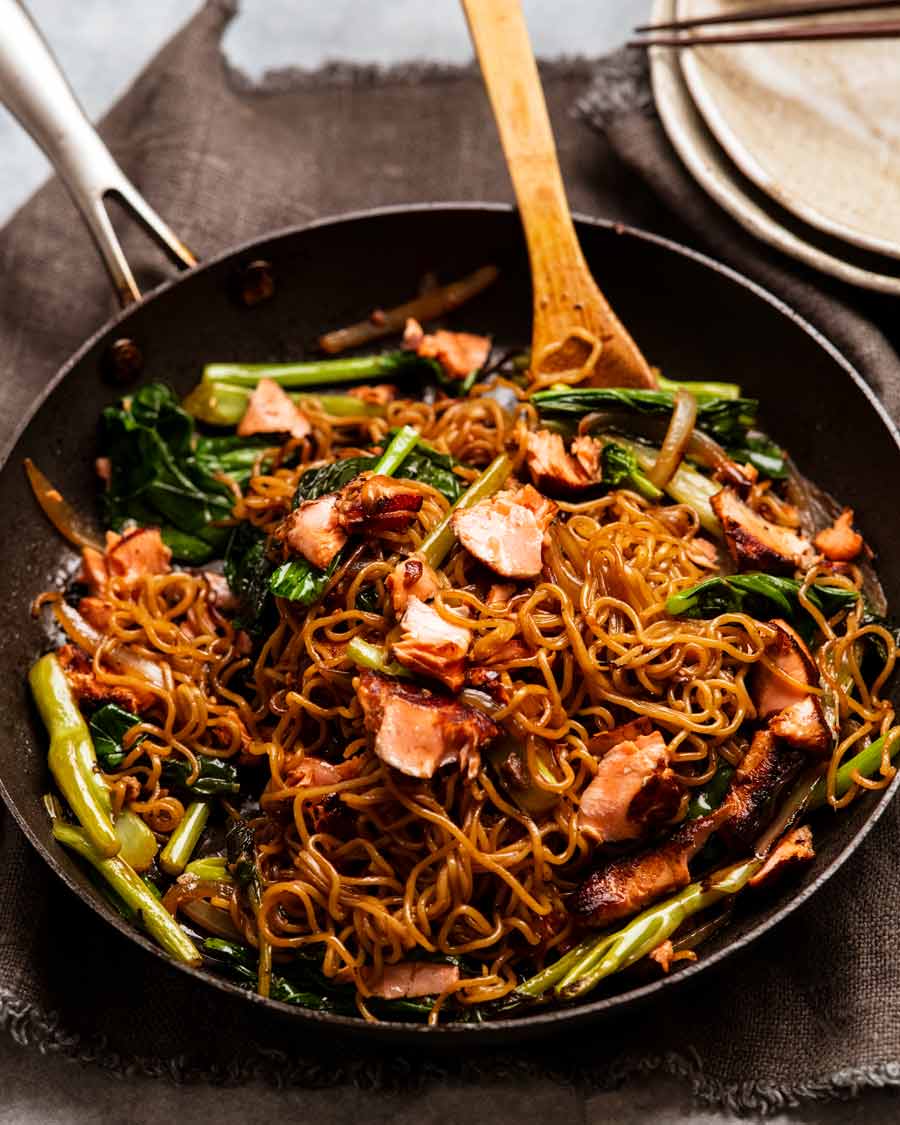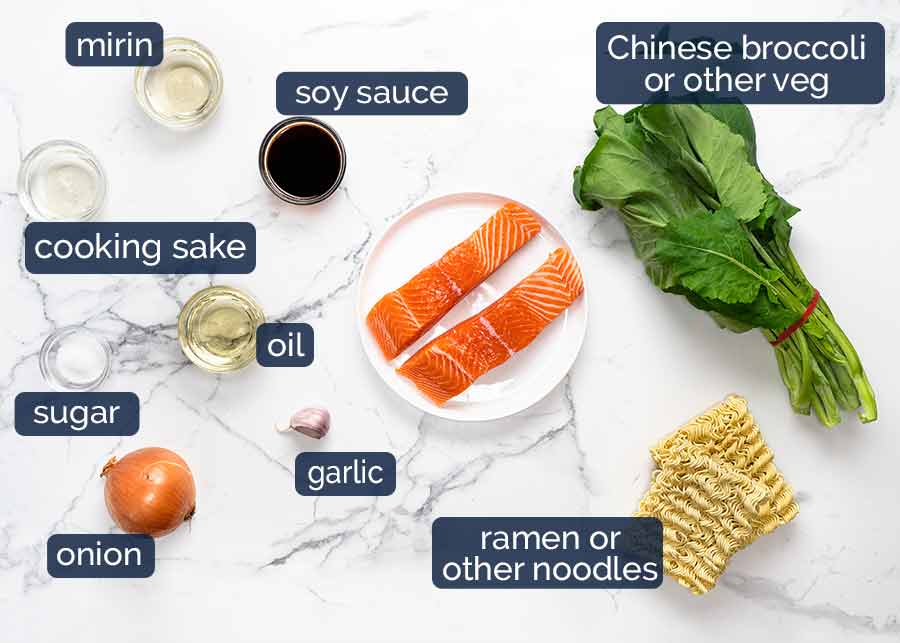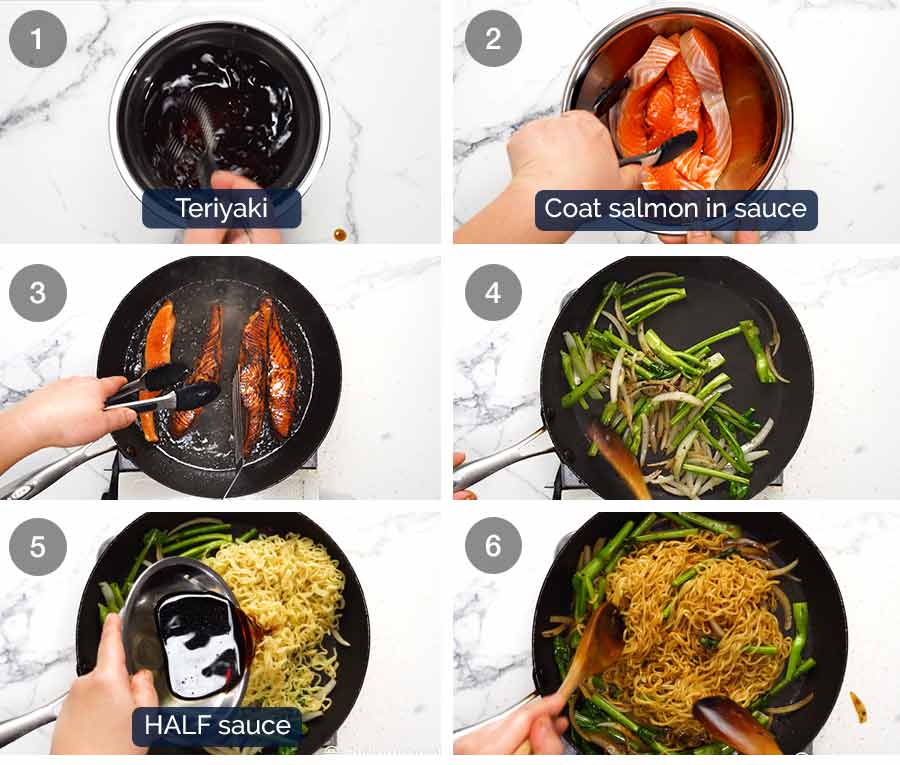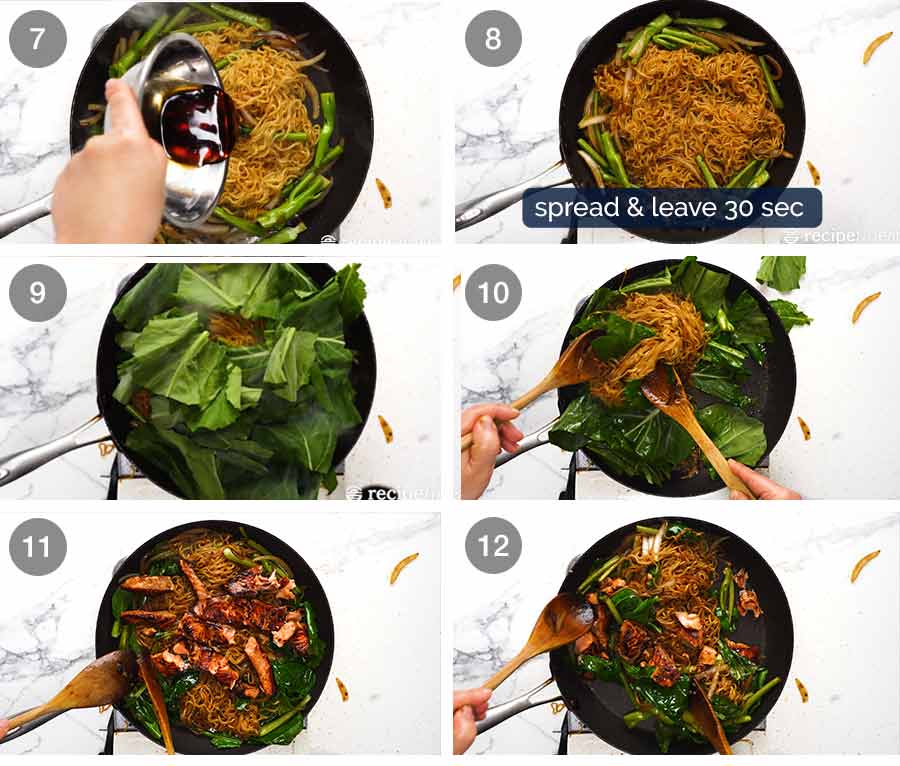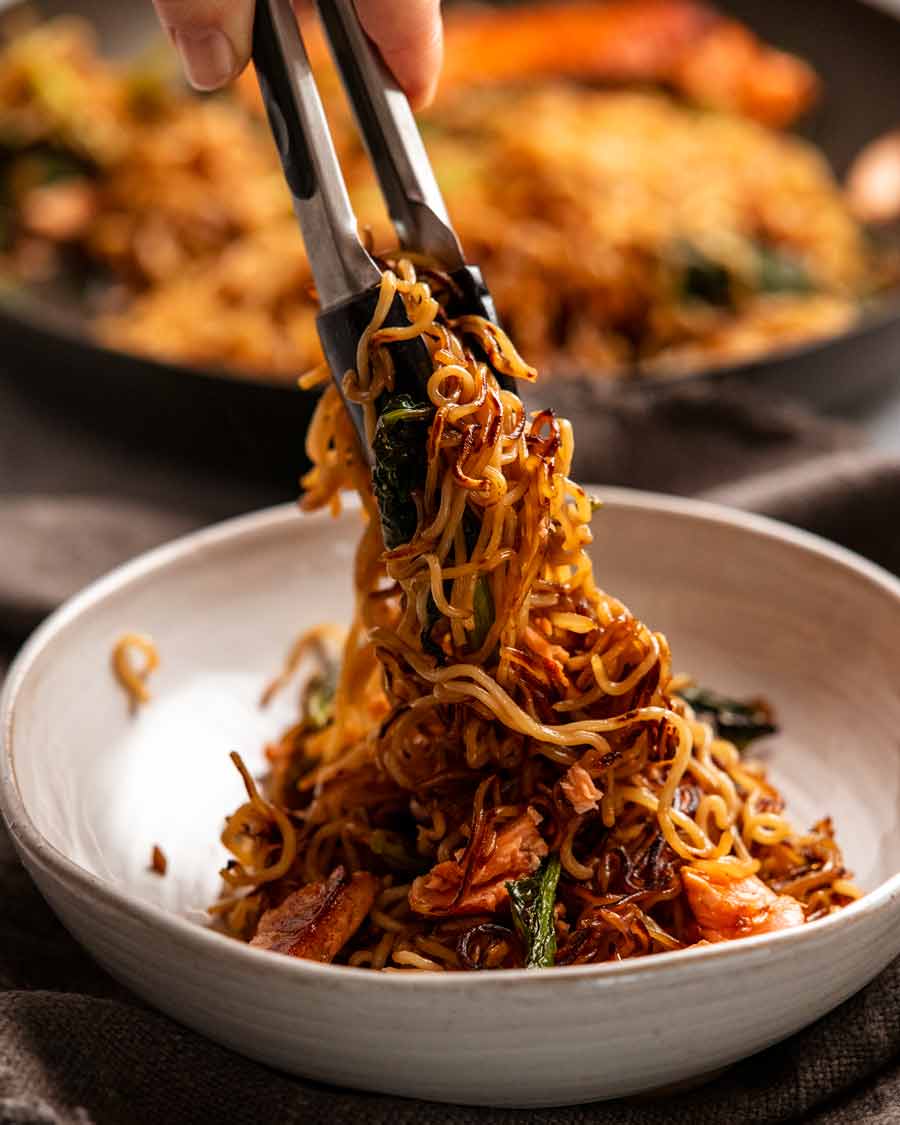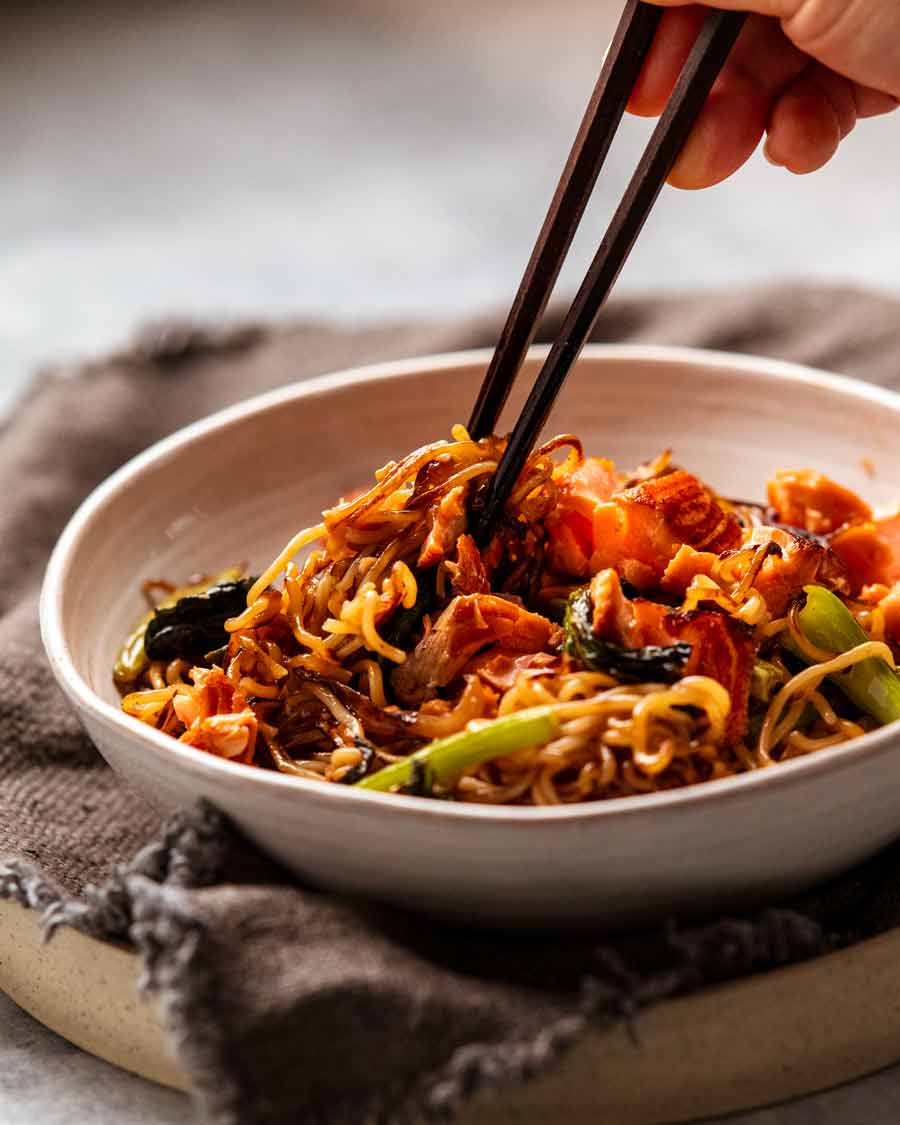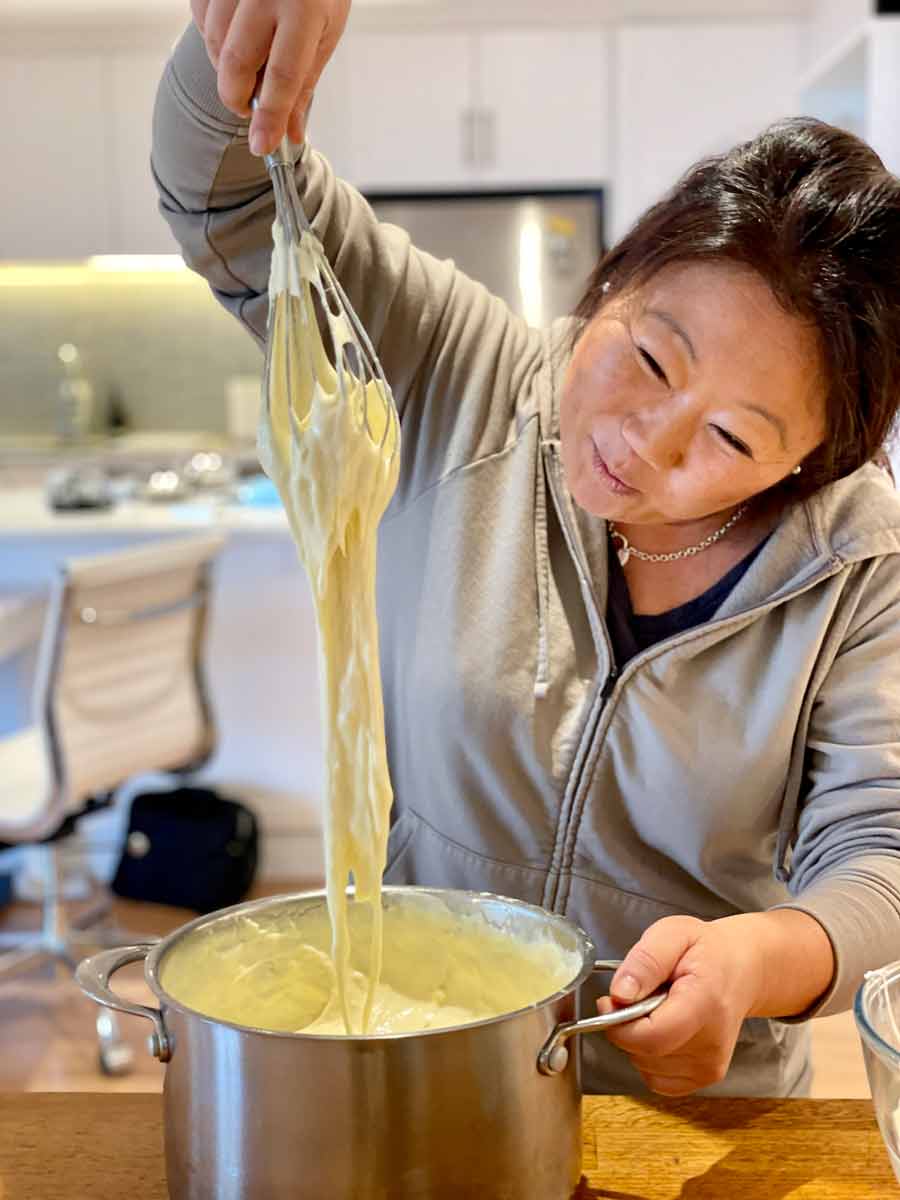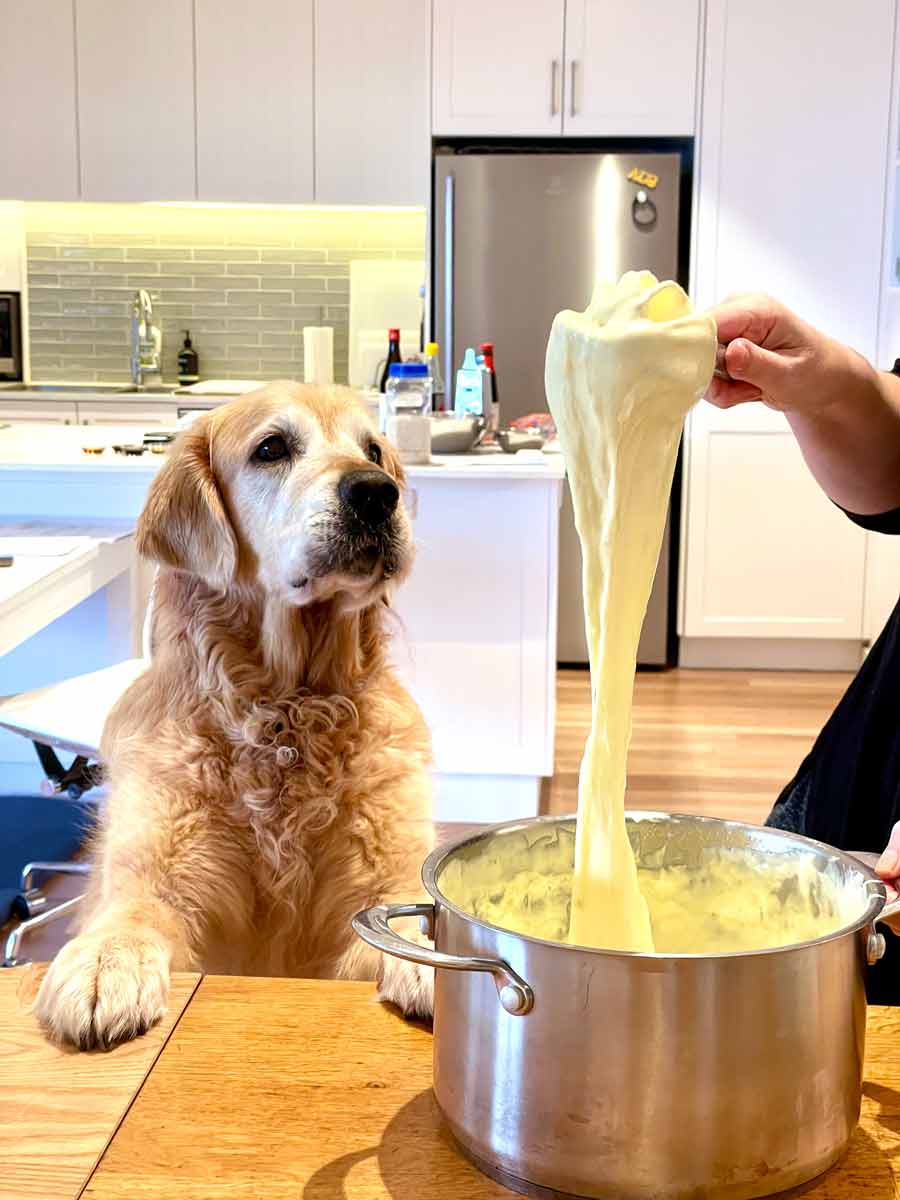I’ve used ramen noodles because I had them in the pantry, but this recipe is suitable for most dried or fresh noodles. Or even spaghetti – yes, really!
Teriyaki Salmon Noodles
My mother is such a stickler for the traditional in Japanese foods that she once wrote a furious letter to a TV network after watching a celebrity chef make what she judged to be total mockery of authentic tempura. She also rolled her eyes dramatically and flailed her arms in protest when she saw Jamie Oliver making ramen with soba noodles. “THAT’S NOT RAMEN!!!”, she yelled at the television. Well, mum. Let’s just get this out of the way right upfront. I am not declaring this to be an authentic Japanese recipe!! 😂 However, I HAVE swiped the sauce from your traditional Teriyaki Chicken recipe for these noodles. It’s perfect as a double-duty sauce – for flavouring the salmon AND using as the sauce for the noodles!
What you need
Here’s what you need for this not-authentic-but-totally-delicious Teriyaki Salmon Noodles!
Salmon – Anywhere between 200 to 250g / 7 – 8oz salmon. Skinless is convenient, though if you can only get skin-on that’s fine too as the cooked flesh comes off the skin easily. You can use fillets, or cutlets with the bones removed. Alternative fish: Ocean trout, but any fish really. Other proteins: This recipe would also work just fine with other meats such as bite-size strips of chicken, beef, pork. I’d scale up the sauce slightly however if using pieces of these meats (more surface area to flavour).Noodles – I’ve used dried ramen noodles because it’s what I always have in stock in my pantry. While I actually prefer the flavour and texture of fresh noodles, I don’t always have them. Other dried noodles (yellow, white, rice noodles) and fresh noodles will work as well, see recipe notes for quantities. In the event of an emergency, spaghetti is fine too. Seriously!!! (Try it, most people can’t tell the difference 😂).Chinese broccoli (gai lan / kai lan) – Probably my most used Asian vegetable, for sheer convenience (easy to chop) and also because I like the “broccoli” like texture of the stems. Substitute with any leafy Asian greens like choy sum, bok choy, pak choy, or about 2 1/2 cups of other vegetables sliced into stir fry-suitable sizes (eg. carrots and zucchini sliced on the diagonal).Onion and garlic – Essential flavour base ingredients I use for virtually every stir fry. Especially garlic!
No self-respecting Japanese cook would ever call something “teriyaki” without using mirin and cooking sake! Alternative fish: Ocean trout, but any fish really. Other proteins: This recipe would also work just fine with other meats such as bite-size strips of chicken, beef, pork. I’d scale up the sauce slightly however if using pieces of these meats (more surface area to flavour).
Teriyaki Sauce
While I’ve been very up front about how this recipe is not a traditional Japanese dish (there is no such thing as teriyaki noodles in Japan!), the sauce ingredients are authentic.
Soy sauce – All-purpose Japanese soy sauce (my family uses Kikkoman brand) or light soy sauce. Please don’t use dark soy sauce, the flavour is far too intense and won’t work for this recipe! Sweet soy sauce (eg. kecap manis) is also unsuitable. More on different types of soy sauces here.Cooking sake and mirin – Two types of rice wines that are essential to Japanese cooking. No self-respecting Japanese restaurant or cook would ever call something “teriyaki” without using these! Nowadays, both are readily available at major supermarkets here in Australia and of course at Asian stores (where they’re better value!). To achieve a truly great teriyaki flavour, I can’t offer a decent substitute for mirin. However, the sake can be substituted with dry sherry or Chinese cooking wine.Alcohol content note: The alcohol in cooking wine mostly evaporates when cooked, and the amount of wine used is small to begin with. There will be trace amounts remaining but it’s so negligible it’s barely worth acknowledging.
Sugar – Typically used in Teriyaki Sauce to make it a bit glossy and syrupy so it coats chicken nicely. In this recipe, it also helps the noodles caramelise, which adds flavour. It doesn’t make this dish noticeably sweet as there is only 1 teaspoon, a small amount compared to the volume of ingredients used.
How to make Teriyaki Salmon Noodles
A nice and easy 15-minute recipe! Teriyaki-seasoned salmon is firstly pan-seared and then set aside. We toss the noodles in the same pan before returning the salmon to the skillet and breaking it up into nice big chunks to mix through. To achieve a truly great teriyaki flavour, I can’t offer a decent substitute for mirin. However, the sake can be substituted with dry sherry or Chinese cooking wine. Alcohol content note: The alcohol in cooking wine mostly evaporates when cooked, and the amount of wine used is small to begin with. There will be trace amounts remaining but it’s so negligible it’s barely worth acknowledging. Flavour tip: more caramelisation on the noodles = more flavour!
These Teriyaki Salmon Noodles are a complete meal (starch, vegetables and protein) so you won’t need to add a side dish. You could also dial up the vegetables in it, if you wanted to. If you add a lot more, you may want to increase the sauce. Leftovers will keep for however long you’re comfortable keeping cooked salmon for. I personally will happily eat fish up to 3 days after cooking, but I know some people’s comfort limit is 2 days. Tell me what you think if you try it! As I said in my opening, salmon isn’t cheap and I do think this is a really great dish to make a piece of lovely salmon go a lot further! – Nagi x
Watch how to make it
Life of Dozer
I always poo-pooed the saying that “all dogs look like their owners”, with Dozer’s mass of golden fur and my jet black hair. But the resemblance here is uncanny!!😂
